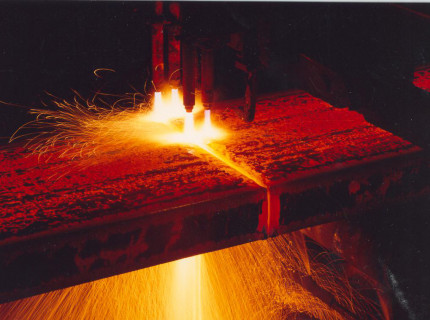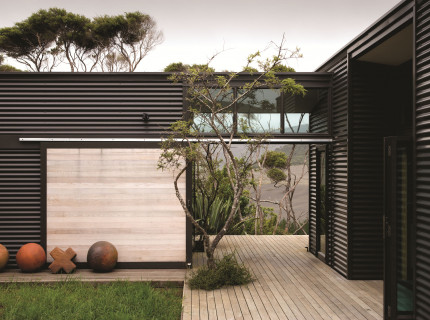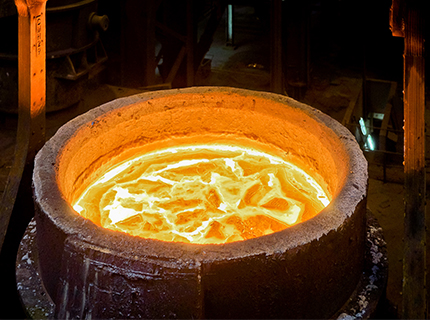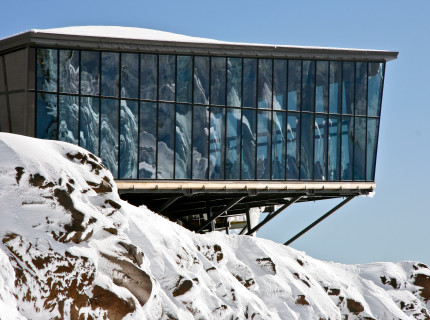Limitations of Use
When used externally, GALVSTEEL® products are suitable for use in moderate environments. To improve the durability of the product, an appropriate coating may be applied. Regular washing to remove airborne contaminants will also improve the product life.
Maintenance
| Application | Recommended Maintenance |
| Roofing | Rain washing |
| Wall Cladding | Rain washing, plus manual washing every 6 months |
| Gutters and Downpipes | Rain washing, plus manual washing every 3 months |
| Fascia | Rain washing, plus manual washing every 3 months |
Design Considerations
Contact with Chemicals
GALVSTEEL® products should be protected from contact with any aggressive chemicals, which could cause premature deterioration of the zinc coating. Examples include chemicals found in ground-treated timber and fertilisers.
Dissimilar Metals Corrosion
When two different metals are in contact and moisture is present, one metal is relatively protected while the other suffers accelerated corrosion. The problem commonly occurs when copper pipes discharge onto galvanised steel.
Painting
When galvanised steel is to be painted, it is recommended that this be carried out immediately after installation or fixing.
- Pre-treatment: Thoroughly clean the surface with a household detergent to remove dirt and grime, using a soft bristle broom if necessary. Wash down with plenty of fresh water and allow to dry completely.
- Primers: A number of primers have been developed for painting galvanised steel and a suitable primer must be used. Consult paint manufacturers for their advice on the best paint system to use.
- Topcoats: It is recommended that two topcoats be applied.
Working with GALVSTEEL®
Forming
Hot-dip galvanised sheet can be formed almost as readily as uncoated cold rolled sheet. It can be formed in a variety of ways, from simple rollforming and brake pressing to complex and intricate stamping.
As with uncoated steel sheet, factors other than metallurgical designation (G250, G300 etc) of the base metal enter into the successful forming of galvanised sheet. The galvanised coating exhibits frictional characteristics that are different from those of uncoated steel. Thus, lubricants, die materials and other elements of fabrication must be compatible with the coating. In stamping and forming operations, it is preferable to use dies that are harder and smoother than would normally be used for the same uncoated steel. When proper attention has been given to forming characteristics, hot-dip galvanised sheet is essentially as formable as cold rolled steel that possesses similar ductility.
Joining
Soldering
Soldering is an established method for joining galvanised sheet or attaching solderable items to galvanised coatings. Galvanised sheet can be readily soldered with many types of conventional solders and fluxes. Lead/tin solder alloys are typically used. Flux residues should be removed after soldering to prevent corrosive damage to the zinc coating.
Welding
Galvanised sheet can be readily welded by the same methods used to weld cold rolled sheet. For example, spot welding is readily performed, but caution must be applied to avoid more rapid deterioration of the spot-welding electrodes. For metal-arc welding and other high temperature welding methods, precautions must be taken to avoid porosity and cracking of the weld that can be caused by penetration of zinc into the weld pool.
Zinc has a much lower melting point (420°C) than steel and a lower boiling point (907°C). During welding, zinc vapor burns in the air to produce dense, white zinc oxide fumes. Adequate ventilation is required to remove these fumes. The thicker the zinc coating, the more fumes are generated. In general, resistance welding is preferred for joining galvanised sheet products because it results in less fuming than other types of welding.
Electric Resistance Welding
Spot Welding
Because the galvanised coating has a lower surface contact resistance than bare steel, welding conditions for galvanised sheet will differ somewhat from those used for welding hot rolled or cold rolled sheet. Generally, higher electrode forces and higher welding currents and/or longer weld-cycle times are required to produce the same fused-zone diameter in galvanised sheet as achieved with uncoated sheet.
Zinc pickup on the electrodes during spot welding can cause fairly rapid electrode wear, so that only several thousand welds can be made before electrode dressing. To minimise zinc pickup, the electrodes should be kept as cool as possible by utilising water cooling and controlling the rate of welding. The use of copper alloy, truncated-cone-shaped electrodes is preferred for spot welding galvanised sheet. Dome-type electrodes also may be used when electrode alignment is a problem.
For all galvanised products, extremely high welding current is to be avoided, because excessive heating tends to cause expulsion of the zinc coating under the electrodes. The optimum setting of the welding parameters must be determined by trial and are dependent on the specific application and sheet characteristics such as thickness or coating weight.
Seam Welding
Conventional seam welding equipment can be used for welding lap joints made with galvanised steel sheet. Seam welding of galvanised steel sheet can be considered to be continuous spot welding; the guidelines for spot welding should be followed for seam welding. To produce acceptable welds, the procedures used for cold rolled sheet should be modified toward slightly narrower electrode width, higher electrode force, higher welding current and slightly lower welding speed.
Restoration of Weld Areas
When good appearance and maximum corrosion resistance are desired in the weld area, oxides and fluxes from the welding operation should be removed by sand blasting, wire brushing or grinding. Satisfactory re-coating methods are soldering, metal spraying or application of metallic-pigmented paints.
Fastening
From a mechanical standpoint, any style of fastener suitable for use with sheet metal can be used to join galvanised sheet to itself or to other materials, provided the fastener design is appropriate for the structural requirements of the application. The list of acceptable fasteners includes common types such as nuts and bolts, screws and rivets, and special types like clamp fasteners, clips and blind screws.
The fastener material should be selected carefully. First, the fastener should possess the same or greater corrosion resistance as the galvanised sheet to ensure that the fastener life does not contribute to premature failure of the fabricated part.
Second, the fastener material should be compatible with the coating; that is, it should be selected to avoid accelerated corrosion that can occur between certain types of dissimilar metals.
Suitable materials include nylon or other plastics, stainless steels and carbon steel fasteners with thick zinc alloy heads. Galvanised or other plated fasteners also are suitable, but the coating must be thick enough so that the corrosion resistance is at least equal to the corrosion resistance of the galvanised sheet.
Fasteners made of lead or copper dramatically accelerate the corrosion of the zinc when an electrolyte is present. These materials set up an electrolytic cell, and the zinc coating sacrifices itself to protect the fasteners. Therefore, these fasteners must be avoided.
Adhesive Bonding
Adhesive bonding is a viable technique for joining coated steel sheet to either other coated or uncoated sheet as well as to other materials. Adhesive bonding is an excellent method of joining dissimilar steel products. It does not alter the properties of the steel or its coating. It provides uniform stress distribution and can be applied to reduce vibration and noise. Adhesive bonding can serve to enhance product design, so that mechanical fasteners and/or welding can be avoided. It can function as a moisture sealant. Also, it increases the range of material choices and material combinations available to the product designer.
Two important conditions are necessary for proper use of adhesive bonding:
- the load on the bonded area should be evenly distributed;
- the joint should be stressed mainly in a shear mode; peel and cleavage forces should be minimal.
Two types of adhesives, thermosets and thermoplastics, are widely used to join steel sheet. Thermoset adhesives generally possess high shear strength, rigidity and durability, and are capable of supporting a wide range of specified design loads. They include acrylics, epoxies, and urethanes. Thermoplastic adhesives generally are tough and ductile, and are excellent for energy-absorbing applications.
Sealants
Sealants are often used between overlapping areas of steel sheet to form watertight joints and to achieve superior environmental durability. Neutral-cure silicone rubber sealants are recommended for use with galvanised sheet. These materials need no primer. They are flexible and non-corrosive as well as resistant to heat, cold, water and ultraviolet rays.
Other types of sealants, like butyl rubber and styrene butadiene rubber, may also be used successfully. For more information about sealants for specific applications, consult a sealant manufacturer.
Painting
Galvanised sheet can be readily painted either before or after fabrication.
Selection of a pretreatment that provides an adherent bond between the zinc coating and the paint is vitally important for correct application of painted galvanised sheet. One of the keys to good performance of painted galvanised sheet is the selection and use of a primer designed for galvanised surfaces.
Many types of paint can be used on galvanised sheet. The choice depends on the ultimate service requirements of the product. For example, some types are formulated to maximise the resistance to fading and chalking. Others provide good flexibility for use with prepainted sheets. To maximise the performance of painted galvanised sheet, it is highly recommended that users consult with paint suppliers to obtain maximum performance.




